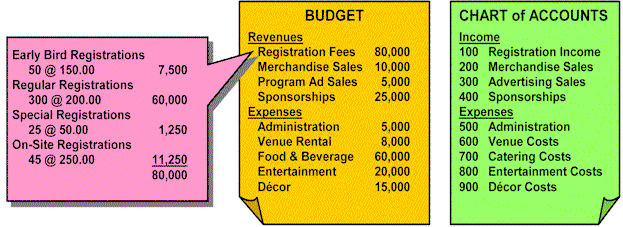|
Budget Development
19 November 2003
The pro forma (projected)
budget is a detailed cash plan that
defines the acquisition, allocation, and disbursement of the financial resources
for an event according to the priorities and necessities of the event
operations.
Preparing a budget involves visualizing the
entire event in financial terms, identifying all potential sources of income and
expenditures and organizing them into functional groups, typically according to
the categories specified in the Chart of Accounts.
Previous event budgets, income statements,
and cash flow statements are typically used to prepare a draft
budget, but if no historical records exist, a zero-based
budget (starting from “zero”) should be drafted using cost
estimates and comparable budgets from other events. When estimating the revenues
and expenses for a budget, revenue projections should be conservative and
expense projections should be liberal.
The draft budget should be prepared in great
detail and include the calculations used to arrive at the line item estimates,
as illustrated below, so the budget-to-actual performance can be compared
efficiently and the budget adjusted as needed based on any variances. This is
best accomplished in a spreadsheet software program, which allows quick
"what if" calculations and modifications.

Building
a budget according to priorities may be illustrated* using rocks, pebbles, and
sand. If you fill a container with the sand first, then the pebbles, and then
try to put in the rocks, they won’t all fit. But if you place the rocks in
first, then the pebbles, and finally pour in the sand, they all fit in the
container. This illustrates that you must put the big “rock” items (the
needs and must-haves) in the budget first, followed by the pebbles (the wants),
followed by the sand (the nice-to-haves). When budget cuts must be made the
nice-to-haves will be eliminated first, followed by the wants.

*Based
on a demonstration first devised by Stephen R. Covey.
Back
|



